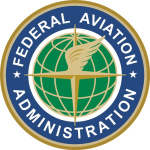- Industry: Government
- Number of terms: 35337
- Number of blossaries: 0
- Company Profile:
The mach speed at which some portion of the airflow over the wing first equals mach 1.0. This is also the speed at which a shock wave first appears on the airplane.
Industry:Aviation
A condition that can occur when operating a swept-wing airplane in the transonic speed range. A shock wave could form in the root portion of the wing and cause the air behind it to separate. This shock-induced separation causes the center of pressure to move aft. This, combined with the increasing amount of nose down force at higher speeds to maintain left flight, causes the nose to “tuck.” If not corrected, the airplane could enter a steep, sometimes unrecoverable dive.
Industry:Aviation
The wheels of an aircraft’s landing gear that supports the major part of the aircraft’s weight.
Industry:Aviation
Ability of an aircraft to change directions along a flightpath and withstand the stresses imposed upon it.
Industry:Aviation
The maximum speed where full, abrupt control movement can be used without overstressing the airframe.
Industry:Aviation
The absolute pressure of the fuel/air mixture within the intake manifold, usually indicated in inches of mercury.
Industry:Aviation
The maximum power an engine is allowed to develop for a limited period of time; usually about one minute.
Industry:Aviation
The greatest weight that an airplane normally is allowed to have at landing.
Industry:Aviation
The total weight of a loaded aircraft, including all fuel. It is greater than the takeoff weight due to the fuel that will be burned during the taxi and runup operations. Ramp weight may also be referred to as taxi weight.
Industry:Aviation
